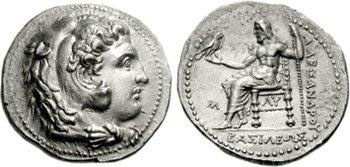Neil S Berman - Expert Numismatist & Silver Coin Dealer
Silver Coins Trade through History
Early Greeks Silver Coins
 The coins of the Greeks were issued by a great number of city states, and each coin carried an indication of its place of origin and sometimes its maker. The coinage systems were not entirely the same from one place to another. However, each area had its own standard for coinage; the standards defined the proper weight of each coin, and with these standards the coins became interchangeable between standards, further simplifying commerce. Each of these standards was used in multiple places throughout the Mediterranean region. In total there were tens of thousands of different coins made by thousands of different makers.
The coins of the Greeks were issued by a great number of city states, and each coin carried an indication of its place of origin and sometimes its maker. The coinage systems were not entirely the same from one place to another. However, each area had its own standard for coinage; the standards defined the proper weight of each coin, and with these standards the coins became interchangeable between standards, further simplifying commerce. Each of these standards was used in multiple places throughout the Mediterranean region. In total there were tens of thousands of different coins made by thousands of different makers.
In the Hellenistic era, the 4th century BC, the Kingdom of Macedonia under Phillip II came to dominate the Greek world. The most powerful of their kings, Phillips’ son Alexander the Great eventually launched an attack on the Kingdom of Persia, defeating and conquering it with one of the largest armies ever assembled. Alexander issued great quantities of gold and silver coins where ever he went for supplies and to pay his troops, and even after his death they were made in his name. Today they are still very available.
Alexander's Empire fell apart after his death in 323 BC, and the eastern Mediterranean region and western Asia, which was previously Persia, were divided among Alexander’s generals into a number of much smaller kingdoms, each issuing its own coins, and which replaced the city state as the principal unit of Greek government. Greek coins were now issued by kings, and to a much lesser extent still by cities. Greek rulers were now minting coins as far away as Egypt and central Asia. The silver tetradrachm, which was four drachms, was a popular trade coin throughout the region.